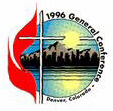History of the United Methodist Church


The United Methodist Church was formed in 1968 with the union of the former Evangelical United Brethren Church and The Methodist Church.
The Evangelical United Brethren Church, established in 1946, represented the union of two U.S.-born denominations: the Evangelical Church and the Church of the United Brethren in Christ. These two churches originated among German-speaking people during the great spiritual awakening in late 18th-century colonies.
The two fellowships and The Methodist Church were similar, particularly in terms of church polity and evangelistic zeal.
Jacob Albright of Eastern Pennsylvania was a lay preacher who gathered a number of followers in the early 1800s. These "Albright people" formed the Evangelical Association, later to become the Evangelical Church. The Rev. Philip Otterbein, ordained by the German Reformed Church, started the United Brethren Movement in the late 1700s.
Meanwhile, the Methodist movement had begun in England in the early 1700s, under Anglican minister John Wesley and his followers. Wesley did not officially organize a new church but sparked a renewal movement within the Church of England. Nonetheless, Methodism spread from England to Ireland and the colonial United States.
Methodist classes and congregations met in the United States from the 1760s. Around Christmas 1784, some 60 ministers gathered in Baltimore and organized the Methodist Episcopal Church, with the word "episcopal" referring to the church's administration by bishops. The denomination grew rapidly and was known for its "circuit rider" ministers on the advancing frontiers.
With rapid growth, philosophical differences and division was inevitable. In 1828 a group of persons, largely moved by an insistence on lay representation, separated and became The Methodist Protestant Church. In 1844, the parent church split again over the issue of slavery. The offspring denomination was the Methodist Episcopal Church, South. The North and South factions reunited in 1939, but a racially segregated system was the compromise. Alongside the five geographic jurisdictions, an overlapping Central Jurisdiction was formed for African Americans. Legal separation within the church was ended in 1968 with the merger of the Methodist and Evangelical United Brethren Churches
General Conference Webmaster: Susan Brumbaugh
PETS Creator: John Brawn
History of the United Methodist Church
1996 United Methodist General Conference